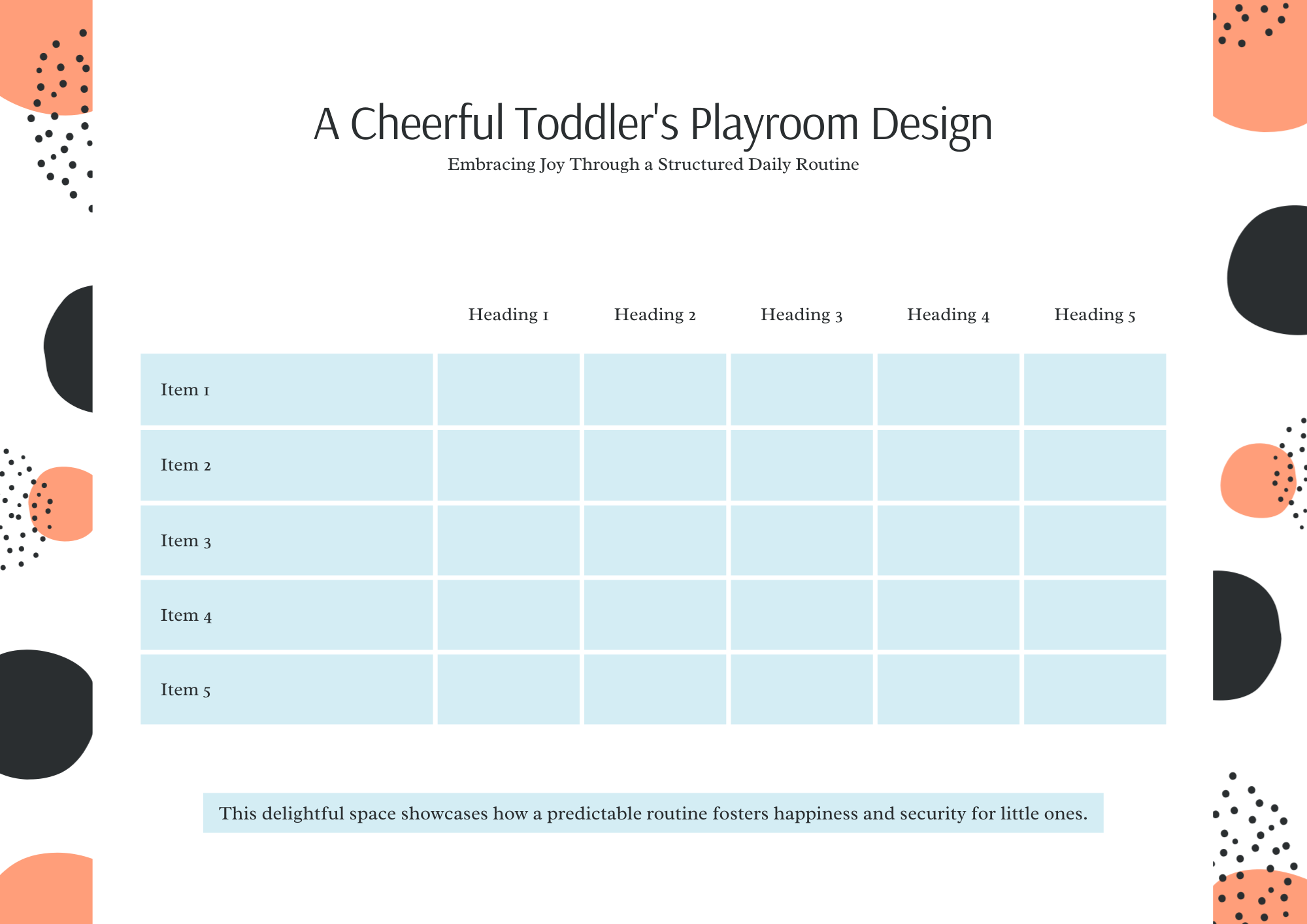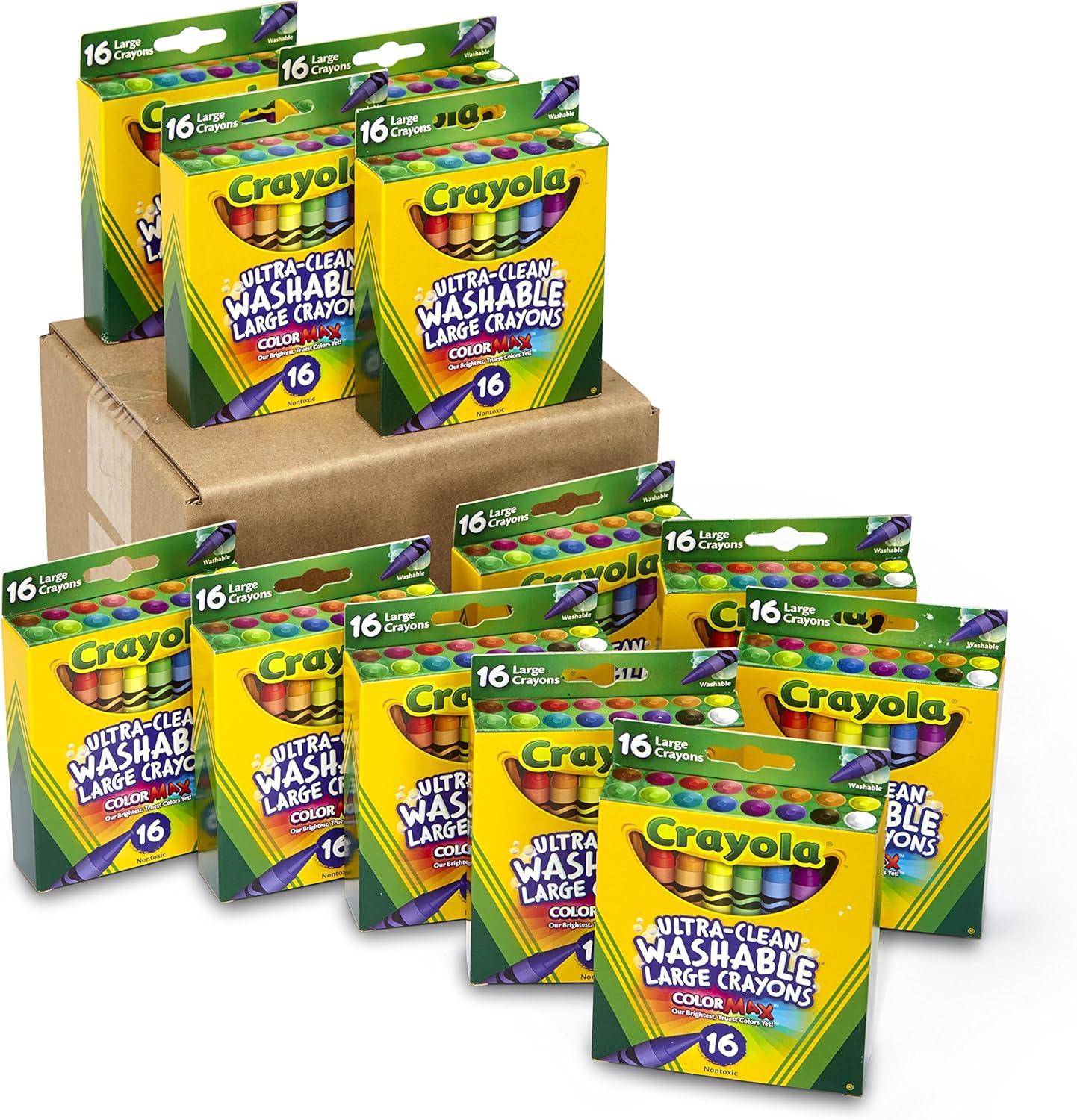A Simple Daily Routine Chart for Your 2-Year-Old

Welcome to the whirlwind world of parenting a 2-year-old. It’s a magical time filled with explosive vocabulary growth, adorable attempts at independence, and, let’s be honest, a healthy dose of chaos. One moment you’re marveling at their ability to stack three whole blocks, and the next, you’re negotiating a peace treaty over a misplaced sock. If you’re searching for a tool to bring a little more calm and predictability into your day, you’ve come to the right place. As a parent who has navigated these delightful and dizzying years, I’ve found one of the most powerful tools in my arsenal is a simple visual routine chart.
This isn’t about creating a rigid, military-style schedule. Far from it. It’s about giving your toddler a visual roadmap for their day. For a 2-year-old, whose understanding of time is still developing, seeing “what comes next” provides a profound sense of security and control. It helps them transition between activities with fewer tears and more cooperation, empowering them and freeing you from being a constant verbal narrator of the day’s events.
Key Takeaways for Busy Parents
- Why It Works: Visual routine charts give 2-year-olds a sense of security, predictability, and control, which reduces anxiety and power struggles.
- Core Components: A successful routine includes key “anchor” points like meals, naps, and bedtime, with flexible activities in between.
- Keep It Simple: Use clear, simple pictures or icons. A 2-year-old’s chart should focus on the main flow of the day, not minute-by-minute scheduling.
- Be Consistent & Flexible: Consistency is key to helping them learn the routine, but it’s okay to be flexible when life happens. The chart is a guide, not a rulebook.
- Make It Interactive: Involving your toddler by letting them move a marker or check off an activity makes them an active participant and builds their excitement.
The “Why” Behind the Wow: The Science of Routines for Toddlers
Before we dive into building your chart, let’s talk about why this simple piece of paper can be so transformative. It’s not just about organization; it’s about supporting your toddler’s brain development. At age two, children are experiencing a cognitive explosion, but their ability to regulate emotions and understand abstract concepts like “later” or “in five minutes” is still very limited.
“Predictability is the bedrock of a toddler’s sense of safety. When they know what to expect, their brains can relax from the high alert of ‘what’s happening now?!’ and focus on learning, playing, and growing.”
Benefits You’ll See Almost Immediately:
- Reduced Power Struggles: The chart becomes the “boss,” not you. Instead of saying, “It’s time to brush your teeth,” you can say, “Let’s see what the chart says is next!” This shifts the dynamic and gives them a sense of agency.
- Enhanced Security and Confidence: Knowing what’s coming next helps eliminate the anxiety of the unknown. This security builds confidence and encourages independence. They’ll start to anticipate the next step on their own.
- Language Development: The chart provides daily, repetitive exposure to words and concepts. Pointing to the picture of a toothbrush while saying “Brush Teeth” reinforces vocabulary in a tangible way.
- Smoother Transitions: Transitions are notoriously tough for toddlers. Moving from a fun activity (playtime) to a necessary one (naptime) can trigger meltdowns. A visual cue that naptime is coming helps them mentally prepare for the shift.
- Concept of Time: While they won’t grasp clocks, a routine chart teaches the fundamental sequence of events—first we eat breakfast, then we play, then we have a snack. This is the foundation for understanding time later on.
Building Blocks of a 2-Year-Old’s Perfect Day: The Sample Routine
Every family is different, so think of this as a flexible template. The key is to identify your “anchor points”—the non-negotiable parts of your day—and build around them. For most families, these are meals and sleep.
☀️ The Morning Flow (Approx. 7:00 AM – 12:00 PM)
- Wake Up & Cuddles: Start the day with connection. A few minutes of snuggling sets a positive tone.
- Diaper Change & Get Dressed: Offer simple choices like, “Do you want the blue shirt or the red shirt?” to foster independence.
- Breakfast: A nutritious meal to fuel the morning’s adventures.
- Free Play: This is crucial for their development. Let them lead the way with blocks, puzzles, or imaginative play. It’s their time to explore and learn at their own pace.
- Creative/Learning Time: This could be 15-20 minutes of a focused activity. Think coloring, painting with water, or looking at a picture book. An engaging activity like our downloadable kids’ coloring book can be a perfect fit here.
- Snack Time: A small, healthy snack to bridge the gap to lunch.
- Outdoor/Active Play: A trip to the park, a walk around the block, or even just running around in the backyard. Getting fresh air and moving their bodies is essential.
☀️ The Midday Reset (Approx. 12:00 PM – 3:00 PM)
- Lunch: Refuel for the afternoon.
- Quiet Time & Wind Down: Read a story or two to signal a transition from active play to rest.
- Naptime: A restorative nap is critical for a 2-year-old’s mood and brain development. Most toddlers this age still need one good nap.
🌙 The Evening Wind-Down (Approx. 3:00 PM – 7:30 PM)
- Wake Up & Snack: Another small snack to keep them going until dinner.
- Quiet Play: As the day winds down, transition to calmer activities. Puzzles, sensory bins, or looking at books are great options.
- Help with Chores: Toddlers love to help! Let them “help” put away toys or wipe the table with a cloth. It builds responsibility and makes them feel capable.
- Dinner: Family mealtime is a wonderful opportunity for connection and conversation.
- Bath Time: A warm bath is a classic signal that the day is coming to an end. It’s a fun and relaxing part of the bedtime routine.
- Pajamas & Brush Teeth: The final steps before bed.
- Bedtime Story: A cherished ritual. Dim the lights, cuddle up, and read one or two favorite books.
- Goodnight & Bedtime: Tucking them in with a consistent phrase like “I love you, see you in the morning” reinforces security.
Crafting Your Visual Chart: A Step-by-Step Guide
Now for the fun part! Creating the chart is a simple DIY project. The goal is to make something clear, durable, and interactive.
Step 1: Gather Your Supplies
You don’t need to be a crafting genius. Simple is best. You can find everything you need on Amazon for a quick and easy project.

Magnetic Dry Erase Board
A magnetic whiteboard is the perfect base. It’s durable, easy to clean, and allows you to move magnetic picture cards around easily. Look for one around 11×14 inches—big enough to be clear but not overwhelming.
View on Amazon
Thermal Laminator & Pouches
To make your routine cards last (because they will be handled by a toddler!), laminating them is a must. A simple at-home laminator is an amazing investment for countless kid projects.
View on Amazon
Adhesive Velcro Dots
If you’re using a poster board instead of a magnetic one, velcro dots are your best friend. They allow your toddler to physically move a card from the “To-Do” column to the “Done” column, which is incredibly satisfying for them.
View on AmazonStep 2: Find or Create Your Pictures
This is the most important part. The pictures need to be incredibly simple and clear. A photo of a bed for “Naptime,” a drawing of an apple for “Snack Time.” You can find free printable icon sets online, or if you’re feeling creative, draw them yourself! The key is that your child can easily identify the activity from the picture alone.
Step 3: Assemble Your Chart
- Print and Cut: Print your chosen images, making them about 2×2 or 3×3 inches. Cut them out.
- Laminate: Place the cut-out pictures in laminating pouches and run them through your laminator. This makes them toddler-proof.
- Add Magnets/Velcro: Stick an adhesive magnet or a velcro dot to the back of each laminated card.
- Set Up Your Board: Create a simple layout on your board. A “To-Do” column on the left and a “Done!” column on the right works wonderfully. Place all the routine cards for the day in order under “To-Do.”
Want to Start Right Now? Get Your Free Printable Chart!
No time for DIY? No problem! I’ve created a beautiful, ready-to-print PDF with all the essential routine icons. Just download, print, and start building a calmer day in minutes.
⬇️ Download FREE Chart NowStep 4: Introduce the Chart with Excitement!
Present the chart as a fun new game. Say something like, “Look at this amazing new chart! It’s going to show us all the fun things we get to do today!” Walk them through the pictures for the day. Keep your energy positive and light.
Implementation & Troubleshooting: Making It Stick
Starting a new system always comes with a few bumps. Here’s how to navigate common challenges and make the routine chart a beloved part of your day.
Consistency is Your Superpower
For the first week or two, be diligent about referencing the chart. Make it a central part of your transitions. Say things like, “Okay, we’re all done with lunch. Let’s go check the chart and see what’s next!” The more you consistently use it, the faster your toddler will buy in and internalize the routine.
What If My Toddler Resists?
Resistance is normal. They are 2, and testing boundaries is part of their job description. First, validate their feelings: “I know you’re having so much fun playing, and you feel sad it’s time to stop.” Then, gently redirect to the chart: “Remember our chart? It says it’s time for our bath. After the bath, we get to read a story!”
If you’re facing consistent struggles with defiance, it might be helpful to explore gentle parenting strategies. Understanding the root of the behavior is key. Our article on how to discipline without yelling offers deeper insights into connecting with your child and navigating these tough moments with empathy and respect.
The Magic of “First, Then”
The “First, Then” principle is gold. Use the chart to illustrate it. “First, we put away the toys (point to picture), then we can go outside (point to picture).” This simple language structure helps their brain process the sequence and makes non-preferred tasks more manageable because they know something fun is coming.
Involve Them in the Process
Let your toddler be the one to move the card from “To-Do” to “Done.” This small act gives them a huge sense of accomplishment and ownership over their day. Cheer for them! “Yay! You finished breakfast! Go move the breakfast card to the ‘Done’ column!”
Awesome Amazon Finds to Support Your Routine
Integrating the right toys and tools can make certain parts of your routine even smoother and more engaging. Here are a few parent-tested, toddler-approved products available on Amazon that align perfectly with a daily routine.

Hatch Rest+ Toddler Sleep Clock
A game-changer for the ‘Wake Up’ part of your routine. You can set it to turn a specific color when it’s okay for your child to get out of bed. This simple visual cue helps prevent those 5 AM wake-up calls and teaches them about quiet time in the morning.
View on Amazon
Crayola Ultra-Clean Washable Crayons
For ‘Creative Time,’ you need supplies that don’t cause you stress. These crayons are truly washable from walls, clothes, and tables. They allow your little artist to explore their creativity without you hovering in fear of permanent marks.
View on Amazon
Montessori Wooden Sorting Puzzles
Perfect for ‘Quiet Play’ or ‘Learning Time.’ Simple, open-ended toys like wooden puzzles and blocks encourage problem-solving and fine motor skills without being overstimulating like many electronic toys. They are durable and grow with your child.
View on Amazon
Classic Board Book: ‘Goodnight Moon’
No ‘Bedtime Story’ routine is complete without a library of classics. The repetitive and calming nature of ‘Goodnight Moon’ by Margaret Wise Brown makes it the perfect book to signal that it’s time to sleep. A sturdy board book is a must for this age.
View on AmazonFrequently Asked Questions (FAQ)
Is 2 years old too young to start a routine chart?
Not at all! Two is the perfect age. They are beginning to understand sequences and crave predictability. A visual chart with simple pictures is designed specifically for their developmental stage, as they can’t yet read but can easily recognize images.
What if our day doesn’t go as planned?
That’s completely normal and expected! The chart is a guide, not a rigid set of rules. If you have an unexpected errand or a playdate runs long, just adjust. You can even talk about it with your toddler: “We had so much fun at the park that we’re going to skip our quiet puzzle time today and have our snack now.” This teaches flexibility.
Should I include screen time on the chart?
This is a personal family decision. If you choose to, it’s wise to place it strategically. For example, avoid putting it right before a meal or nap, as transitioning away from a screen can be very difficult for a toddler. If you include it, make sure there’s a clear “All Done” step in the routine immediately following it.
How long should each activity last?
For a 2-year-old, focus on the sequence, not the duration. Their attention spans are short. Free play might last an hour, while a focused creative activity might only be 10-15 minutes. Follow your child’s cues. The chart is just there to show them what’s coming next, whenever “next” happens.
My partner and I have different parenting styles. How do we stay consistent?
This is a great question. Sit down together and agree on the core “anchor points” of the routine (meals, nap, bedtime). The chart can be a unifying tool. If you both agree to follow and reference the chart, it creates consistency for your child, even if your approaches to play or other activities differ slightly.
Your Journey to a Calmer, More Connected Day
Embracing a daily routine chart isn’t about chasing perfection. It’s about providing a framework of predictability that allows your 2-year-old to thrive. It’s a tool that fosters independence, reduces frustration (for both of you), and creates more space in your day for joyful, connected moments.
Remember to start simple, stay consistent, and celebrate the small wins. When your toddler proudly moves a card to the “Done” column for the first time, you’ll see the magic firsthand. You’re not just organizing your day; you’re giving your child a priceless gift of security and confidence that will serve them for years to come. You’ve got this.

